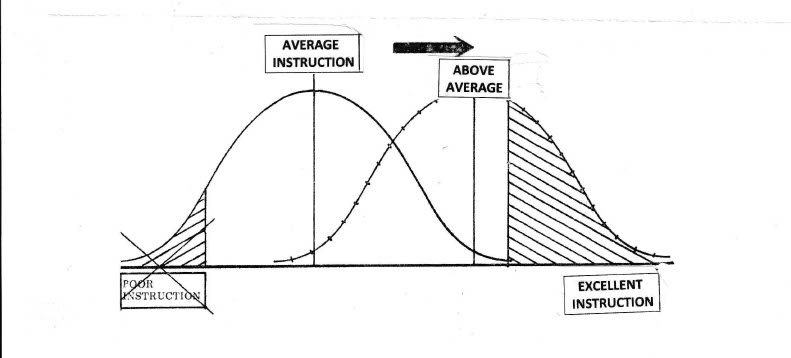Dr. Hans Andrews is Distinguished Fellow in Community College Leadership and former President of Olney Central College in Illinois and was an adjunct faculty member at Illinois State University in Curriculum. He is a former secondary school teacher and counselor.
“How do you know your teacher evaluation program really works?” This was the question asked immediately after hearing our presentation in front of a group of nearly 100 college administrators and governing board members. We had just presented ways we had improved our evaluation of teachers system.
One of our community college Governing Board Members on our panel looked up and asked to take that question!” She enthusiastically replied:
Before we installed our present system I could not go anywhere in the community, grocery shopping, church, group meetings and other places without someone seeking me out to complain about a teacher at the college who had their spouse, child, or neighbor in class. The questions centered on how come we kept such teachers and what were we doing about it.
Key elements of an evaluation system
One of the key elements of a teacher evaluation system is to have some degree of agreement between the college board/administration and the faculty. There is no way that each side will be able to end such discussions with 100 percent of what they would prefer. On the other hand, whatever is agreed to must focus on working to provide the students in the institution with quality teachers in every classroom. Such was the outcome at Illinois Valley Community College after several months and numerous meetings in setting up a much needed improved evaluation system.
Another key element from the administrative side became clear that the evaluators, whether deans, or a vice president of instruction needed to have full support of the college president and of the board of trustees. Trust that the evaluation results were honestly carried out, clearly presented to those faculty members having been evaluated, given adequate time those needing some time to remediate those flaws or weaknesses in their teaching, and then re-evaluated to see if improvement had, indeed, been forthcoming had to be a major part and concern of the role of the governing board members.
Clear board policies, administrative follow-through of the policies, and a review by a competent education attorney were all key elements to avoid having a decision overturned or taken to arbitration or appealed to a court.
The tough decisions were those where the administration would present a summary on a teacher needing a vote by the board to present an official ‘Notice to Remediate’ or a ‘ Notice to Dismiss’ when the administration had reached this point.
The other end of the curve
On the other end of the evaluation was a program that had been instituted to ‘recognize’ excellence in teaching. This amounted to having the governing board make a presentation to outstanding faculty members an engraved plaque with both board and administrative signatures. The second part of this recognition was a $500 US check. These were also presented during the governing board official meetings where newspaper and radio press personnel would be in attendance.

Outcomes for students
Possibly the best way to evaluate an evaluation system and how it works for the students of an institution can be shown how graduates of the college did after obtaining their two-year Associate Degrees. The following is the result of seven years of follow up of graduates attending Illinois State University some ninety miles from Illinois Valley Community College. This university was the recipient of the largest number of the college’s transfer students.
This is a short summary of the outcomes of our effort to find and place high quality teachers: This author worked in ‘the trenches’ for over 25 years as an evaluator of teachers prior to and after tenure was awarded in my institutions.
Over this time, 2l tenured teachers were removed for poor performances after remediation, workshops, chairperson support and other attempts were made to help them improve. Another 34 teachers were not rewarded tenure during this time and were notified they would not be hired back after one, two or three years of evaluation of their teaching. Our community college graduates going to Illinois State University achieve the highest grade point averages of all 50 community colleges sending students there. Our students were number one in 12 of the last 14 semesters kept track of at that time. The other two semesters the colleges’ students scored second of the 50 community colleges.
These results helped provide proof that our move to place quality teachers in every one of our classrooms was paying off for our students! We shared these results with all of the faculty members and administrators and board members as the results came in every semester! A lot of pride was developed throughout the institution.
Summary
Working both ends of the curve in teacher evaluation presents the governing board, students and faculty members a working plan that will improve instruction. It must work to improve or remove those teachers not performing up to a quality level, move many more faculty members from being able to settle on being ‘average’ in their teaching to the right side of the curve for improving quality teaching. Recognition for improved and high quality teaching helps to solidify faculty in the right side of the curve as they receive reinforcement in what they are accomplishing as outstanding teachers. This system should lead to many more above average to excellence in teaching at any institution with a high quality and meaningful teacher evaluation system.




